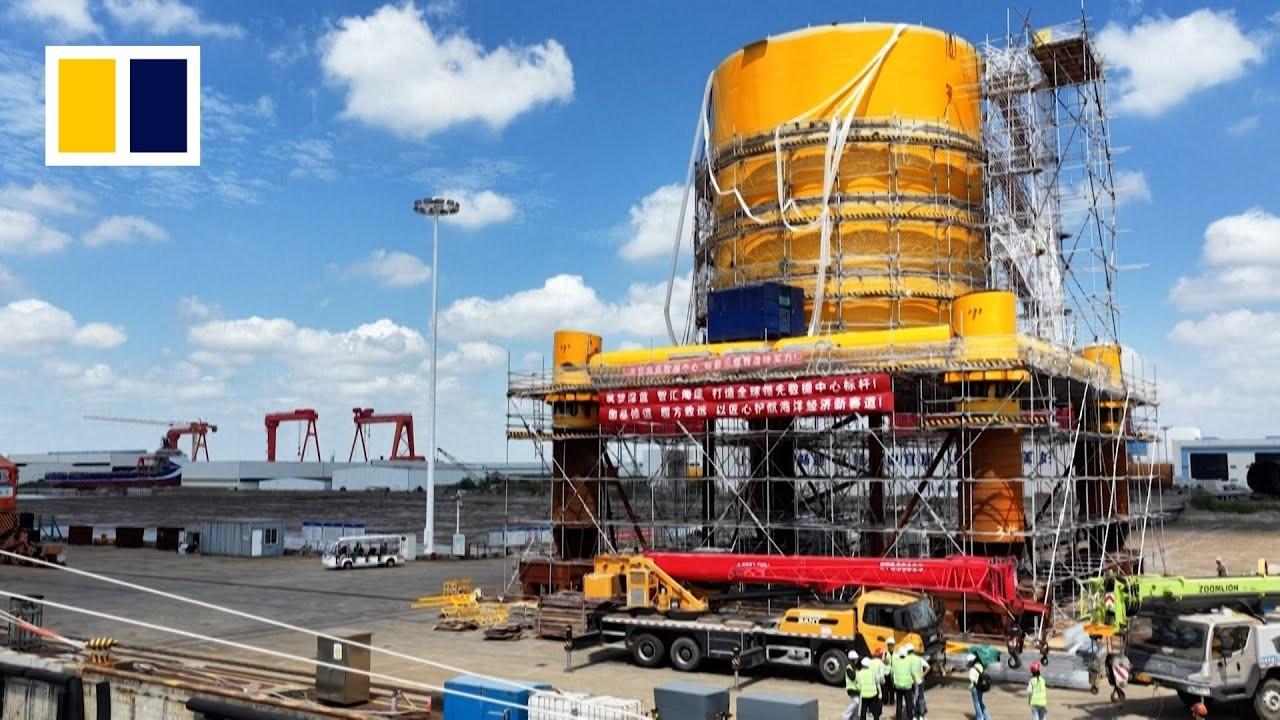Link:
https://www.scmp.com/news/china/science/article/3333982/nuclear -tech-milestone-chinas-supercritical-steam-free-generator-connectsgrid
Please see the link above for the source text.
Nuclear tech milestone: China’s supercritical ‘steam-free’ generator connects to grid
Supercritical carbon dioxide power system in southwest China is the world’s first commercial unit of its kind
Reading Time:2 minutes
Why you can trust SCMP
7
Listen

25 November 2025
China has brought online the world’s first commercial supercritical
carbon dioxide power generator – a revolutionary clean energy technology pioneered by the China National Nuclear Corporation (CNNC).
This power generator, which uses carbon dioxide instead of steam to transfer heat, has been connected to the grid from a steel production plant in China’s southwestern province of Guizhou to produce electricity from waste heat, according to a social media post by CNNC’s Nuclear Power Institute of China on November 10. Once operational, the two 15-megawatt power units are expected to be 50 per cent more efficient at capturing and using waste heat from steel production to generate electricity than existing steam power technology.
Advertisement
It also signals a transformative leap for next-generation nuclear reactors and advanced energy systems because these efficient, compact power systems could be fitted to produce power from mobile nuclear power sources, spacecraft and concentrated solar plants.
The project by the Nuclear Power Institute of China and Jigang International Engineering and Technology is expected to lay the foundation for future units.
Advertisement
According to the institute, the supercritical carbon dioxide waste heat power generator, located at the state-owned Shougang Shuicheng Steel plant in the city of Liupanshui, is the world’s first commercial grid-connected unit of its kind.

Technicians maintain steam turbine impellers at Huanengruijin Power Plant Ganzhou, Jiangxi province. File photo: VCG/VCG via Getty Images
Thermal power plants typically rely on two main thermodynamic cycles. The Rankine cycle, used in steam power plants, involves water being boiled until it changes into water vapour or steam, which is used to drive a turbine and produce electricity.
Advertisement
The Brayton cycle, used in gas turbines and jet engines, involves compressing gas to a high pressure and then heating it, causing it to expand and drive a turbine.
Supercritical carbon dioxide power generation relies on using carbon dioxide in a supercritical state, or above a critical pressure and temperature at which it has the properties of both a gas and a liquid. This can be powered by waste heat, including that generated by
sintering – a process used to compact and bond powdered steel. The waste heat can reach temperatures over 700 degrees Celsius (1,292 degrees Fahrenheit).
Further Reading
Why China’s mega coal-fired power plants thrive amid green energy boom
China reaches energy independence milestone by ‘breeding’ uranium from thorium
China building world-first floating artificial island with nuclear-proof bunker
When using high-temperature heat sources, the efficiency of the Rankine cycle used in steam power plants is limited to about 40 per cent, according to the Institute of Mechanics of the Chinese Academy of Sciences.
In comparison, the properties of supercritical carbon dioxide allow for power generation efficiency to reach over 50 per cent, even with hightemperature heat sources.
Supercritical carbon dioxide is also denser than steam, meaning units can be made with smaller turbines and other components for the same amount of power generation, making them promising for use in confined spaces such as ships and spacecraft, according to the Institute of Mechanics.

China trials underwater data centres to solve energy woes
China trials underwater data centres to solve energy woes
The Nuclear Power Institute of China has been researching and developing supercritical power units for more than a decade.
Advertisement
In 2019, the institute achieved stable, full-power supercritical carbon dioxide power generation in a laboratory. It began construction on units, capable of powering around 30,000 US households, in 2023.
Supercritical carbon dioxide power generation units are also being tested elsewhere in the world, including the Supercritical Transformational Electric Power (Step) Demo pilot plant. The project is led by GTI Energy and funded by the US Department of Energy.
Under the Step project, a 10-megawatt electrical (MWe) pilot power plant in San Antonio, Texas, completed its first phase of testing in September last year, according to GTI Energy.
The plant reached operational speed at a temperature of 500 Celsius, generating 4 MWe of grid-synchronised power for 4,000 homes.
Its final phase of testing aims to reach the 10-MWe mark, operating at a temperature of 715 degrees Celsius.
